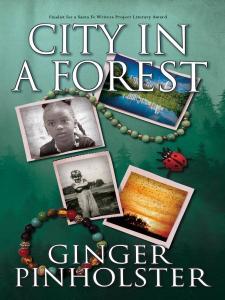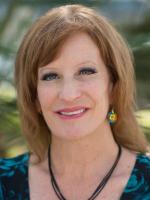
Ginger Pinholster: City in a Forest
For this column, NASW book editor Lynne Lamberg asks NASW authors to tell how they came up with the idea for their book, developed a proposal, found an agent and publisher, funded and conducted research, and put the book together. She also asks what they wish they had known before they began working on their book, what they might do differently the next time, and what tips they can offer aspiring authors. She then edits the A part of that Q&A to produce the author reports you see here.
Publication of NASW members’ reports in Advance Copy does not constitute NASW’s endorsement of their books. NASW welcomes your comments and hopes this column stimulates productive discussions.
CITY IN A FOREST
Ginger Pinholster
Black Rose Writing, September 19, 2019
Print: $18.95, ebook: $6.99
ISBN-10: 1684333180; ISBN 13: 9781684333189
Ebook: B07TLZJBB8
Pinholster reports:
In the early 1900s, northern Atlanta harbored a constellation of tight-knit African-American communities, tucked within the city’s thick tree canopy. By the 1950s, many of those communities had been unfairly seized as white city planners pushed for new parks and roads.
In my debut novel, a pristine wilderness has managed to persist, but risks being flattened by an unscrupulous developer unless two brave women can stop him. The fictional forest, Silver Park, was inspired by Atlanta’s Lynwood Park neighborhood, an African-American community near where my family lived. When I was a teenager in the 1970s, Atlanta rapidly lost tree cover to development. Its tree canopy has declined by 60% since then. In writing my novel, I imagined what might have happened during Atlanta’s building boom, if an untouched forest, hidden within one of the city’s historic African-American neighborhoods, had escaped destruction.My book’s two female protagonists, Arden and Parker, fight to stop the unethical land developer, Buddy. The ensuing land battle plunges both women into a chaotic series of conflicts involving a celebrity art dealer, a QVC queen, and the forest that has claimed their hearts. This eco-fiction/Southern fiction book explores racial inequities, childhood sexual abuse, and the power of friendship.
I wrote the book over many weekends while working for my previous employer, the American Association for the Advancement of Science, and pursuing my M.F.A. degree through a low-residency program at Queens University of Charlotte.
I found a small independent publisher by searching Duotrope and Submittable. My publisher, Black Rose Writing, provided a cover design based on my idea. I recruited a professional editor, Kim Sheeter, to help with content review. Proofreading was up to me and several eagle-eyed advance readers. Marketing has been a collaborative effort with the publisher. I was terrified to ask other writers for blurbs, but thrilled when Terry Kay, author of To Dance with the White Dog, responded favorably.
Anne Lamott points out that “the first draft is the child’s draft, where you let it all pour out and romp all over the place.” I agree: it’s important to have fun with the process.
Contact info:
- Ginger Pinholster, 571-382-0537, gingpin@gmail.com, http://www.GingerPinholster.com, @gingerpin
- Book websites: https://www.gingerpinholster.com/novels, https://www.blackrosewriting.com/literary/cityinaforest
- Publicist: Christopher Miller, 210-767-3256, PR@blackrosewriting.com
NASW members: will your book be published soon? Take advantage of this opportunity for shameless self-promotion. Submit your report for Advance Copy.
Tell your fellow NASW members how you came up with the idea for your book, developed a proposal, found an agent and publisher, funded and conducted research, and put the book together. Include what you wish you had known before you began working on your book, or had done differently.
See https://www.nasw.org/advance-copy-submission-guidelines.
View Advance Copy archives at https://www.nasw.org/member-article/advance-copy.
Thinking of writing a book? If you are a NASW member, you may access a list of more than 200 books and online resources to help you craft your book proposal, find an agent and funding sources, negotiate your contract, learn about self-publishing, publicize and market your book, and more at https://www.nasw.org/article/write-book.
Send book info and questions about book publishing to Lynne Lamberg, NASW book editor, llamberg@nasw.org.
Hero image by fan yang on Unsplash
Advance Copy
The path from idea to book may take myriad routes. The Advance Copy column, started in 2000 by NASW volunteer book editor Lynne Lamberg, features NASW authors telling the stories behind their books. Authors are asked to report how they got their idea, honed it into a proposal, found an agent and a publisher, funded and conducted their research, and organized their writing process. They also are asked to share what they wish they’d known when they started or would do differently next time, and what advice they can offer aspiring authors. Lamberg edits the authors’ answers to produce the Advance Copy reports.
NASW members: Will your book be published soon? Visit www.nasw.org/advance-copy-submission-guidelines for information on submitting your report.
Publication of NASW author reports in Advance Copy does not constitute NASW's endorsement of any publication or the ideas, values, or material contained within or espoused by authors or their books. We hope this column stimulates productive discussions on important topics now and in the future as both science and societies progress. We welcome your discussion in the comments section below.





